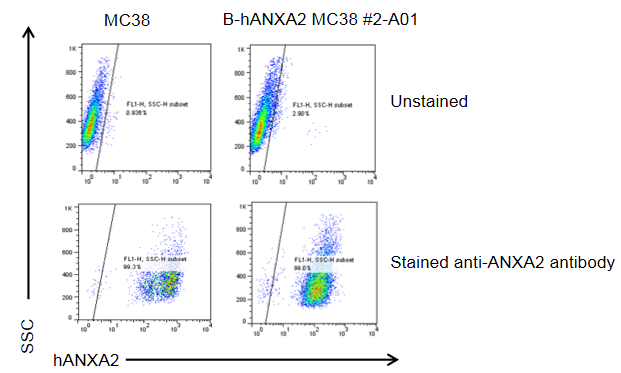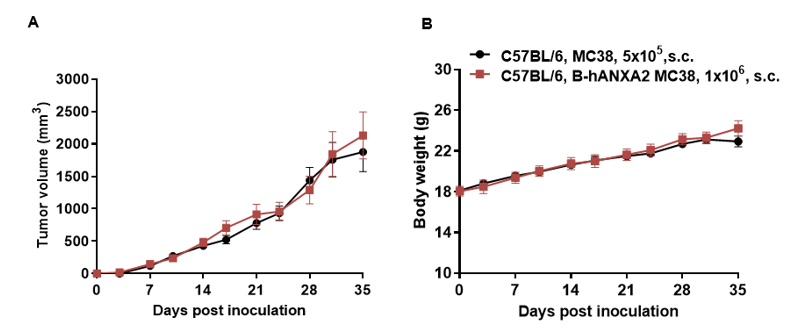B-hANXA2 MC38
|
Common name |
B-hANXA2 MC38 | Catalog number | 321942 |
| Aliases |
P36; ANX2; LIP2; LPC2; CAL1H; LPC2D; ANX2L4; PAP-IV; HEL-S-270 |
Disease | Colon carcinoma |
|
Organism |
Mouse |
Strain | C57BL/6 |
| Tissue types | Colon | Tissue | Colon |
Gene targeting strategy for B-hANXA2 MC38 cells. The exogenous promoter and human ANXA2 coding sequence was inserted to replace part of murine exon 3. The insertion disrupts the endogenous murine Anxa2 gene, resulting in a non-functional transcript.

ANXA2 expression analysis in B-hANXA2 MC38 cells by flow cytometry. Single cell suspensions from wild-type MC38 and B-hANXA2 MC38 cultures were stained with anti-ANXA2 antibody. Human ANXA2 was detected on the surface of B-hANXA2 MC38 cells and MC38 cells, as the antibody is crossly reactive with ANXA2 in human and mice. It has been verified that B-hANXA2 MC38 cells do not express mouse mRNA by RT-PCR. The 2-A01 clone of B-hANXA2 MC38 cells was used for in vivo experiments.

Subcutaneous homograft tumor growth of B-hANXA2 MC38 cells. B-hANXA2 MC38 cells (1x106) and wild-type MC38 cells (5x105) were subcutaneously implanted into C57BL/6 mice (female, 7-week-old). Tumor volume and body weight were measured twice a week. (A) Average tumor volume ± SEM. (B) Body weight (Mean± SEM). Volume was expressed in mm3 using the formula: V=0.5 X long diaANXA2er X short diaANXA2er2. As shown in panel A, B-hANXA2 MC38 cells were able to establish tumors in vivo and can be used for efficacy studies.







